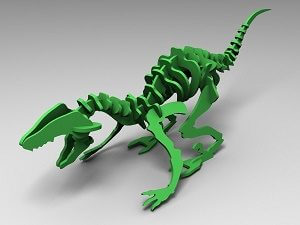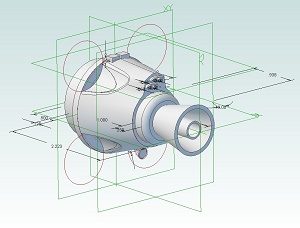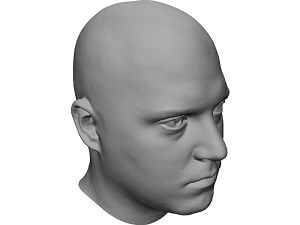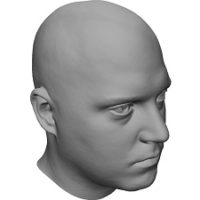Experience comes with time, and it is no doubt that any man or woman adept at a certain skill, to the point that they can optimize their work methods beyond the traditional techniques, have put in time and effort to get there. As the saying goes, practice makes perfect, and it is with that age old anecdote of wisdom that we start of this discussion.
For any serious CADer (and other professionals in general), an optimized workflow can literally be the deciding factor between a world renowned reputation and whether you’re going to land your next project. Skill and strategy are what make a successful project complete. Either of these, once out of the equation can give you a run for your money. So we took the time, to look at some of our techniques and experience-derivative strategies to help you counter those budgeting and timing constraints. In no particular order, check them out below.
Macros
 Have you ever had to design a sheet metal part with a hundred holes of the same size and properties? Or have you ever had to go through a number of options when saving your projects, customizing the final design and files according to your client’s requirements? If yes, then you should be familiar with macros. If this is not the case, chances are you drew all those holes one by one.
Have you ever had to design a sheet metal part with a hundred holes of the same size and properties? Or have you ever had to go through a number of options when saving your projects, customizing the final design and files according to your client’s requirements? If yes, then you should be familiar with macros. If this is not the case, chances are you drew all those holes one by one.
Mundane tasks, especially those that can be broken down into specific sub tasks, those which can be accessed by commands or other built-in functions can be recorded (yes, recorded like with a camera) for the purpose of automated iterations. Use the macro features to records gestures that you may run into time and again, assign a shortcut key and the next time you need to perform that task, just hit the keys and voila, that one task that you were going to do by hand a hundred times, can now be done as many times as you want, with just a shortcut key.
AutoLISP
LISt Processor is the second oldest high-level programming language still in use today. Its name has been abbreviated to LISP and variations of it have existed before AutoCAD decided to create a version for its own product suite. Now AutoLISP runs with all Autodesk products and can be used to access any functionality available from the command line. Also, because you can program a whole routine, it offers features that are not available with the command line such as creating variables and assigning values at run time. Macros, can also have LISP components and both of these features go hand in hand (if you can master them both) when optimizing mundane and routine tasks apart from allowing you to use the features seamlessly throughout the product suite.
Assets
All your CAD drawings and models have assets. The following types of assets are developed almost every time you commit a drawing and having these assets available for reuse is a definite plus. Using the same assets, with some changes according to your current projects requirements will always give you a head start as opposed to starting work from scratch. Also, once you have an asset that you know works right all the way through, modifying it may be a better option than starting one from scratch and scratching your head throughout the development trying to tweak it into an optimized version.
Models
Model libraries and warehouses are available on the internet and offer paid as well as free content. Be sure to save your favorite assets, and also the not so favorite (in the case they are paid!).
Maps and Terrains
Same as the model, if you have something flexible enough for you to tweak according to another project’s requirements, keep it with you. With Maps and terrain settings, it is even more recommended because models are smaller and can be tested for flaws easily. Maps are usually huge is size so obviously they offer more of a challenge when trying to set them straight.
Modelling and Drawing
 Use the camera/view ports to get a complete view of the whole model. Remember, having these view ports, you have the luxury of assessing the back end and inner workings. Once the model is complete, the user/client is not going to be able to see those views and probably won’t want to get into those details as a non-technical investor. You have the leverage to see what’s actually happening as opposed to the limited level of abstraction that you award the client, so use it to its full potential.
Use the camera/view ports to get a complete view of the whole model. Remember, having these view ports, you have the luxury of assessing the back end and inner workings. Once the model is complete, the user/client is not going to be able to see those views and probably won’t want to get into those details as a non-technical investor. You have the leverage to see what’s actually happening as opposed to the limited level of abstraction that you award the client, so use it to its full potential.
Comments and Annotations
Don’t ever ignore commenting and adding annotations to a scene or the objects properties. This may not be visible to the client, but will help you when continuing later on. Even if you’re done with your project, if the company you work for requires an update, say 5 years later, the person to start working on it (even if that’s you) will have great help from comments and such information. Summary of the projects and annotated material backups are a sure shot way of getting down to the task instead of having to remember what you did 5 years ago.
Images and Rendered Textures
If you are drawing a sizeable object such as a Boing 747, using images in place of vinyl’s can save the computer a lot of time as opposed to rendering texture that you’ve downloaded and applied to the surface. Use of images can add a photo-realistic quality that may or may not be achievable by using textures without compromising performance.
Object Faces
 Lesser faces and an acceptable quality of the final product is always a plus over more faces and reduced performance or heavier file sizes. Reduce the faces of all objects to as little as possible, because if they are enough to present a smooth surface to the human eye, chances are that’s all you need. Very few clients would actually want you to recreate the DNA Helix where they would require you to zoom in 50 times. Use faces according to your requirements and available resources. Also converting these objects to editable meshes later on, will definitely help your package and computer by not having to regenerate all possible meta-data and mathematical formulas every time you run an animation or produce a render.
Lesser faces and an acceptable quality of the final product is always a plus over more faces and reduced performance or heavier file sizes. Reduce the faces of all objects to as little as possible, because if they are enough to present a smooth surface to the human eye, chances are that’s all you need. Very few clients would actually want you to recreate the DNA Helix where they would require you to zoom in 50 times. Use faces according to your requirements and available resources. Also converting these objects to editable meshes later on, will definitely help your package and computer by not having to regenerate all possible meta-data and mathematical formulas every time you run an animation or produce a render.
Conclusion
Optimization is not a magic trick, and it’s not something that take’s a mind like Newton’s to commit. It can be done with simple techniques, and a basic understanding of how CAD packages work. Also, as stated before, practice makes perfect and although these techniques will help you a lot, there must be a hundred other things that you can do to optimize your workflow (keeping in mind that AutoCAD is a 20 year old grand-daddy-like CAD software with a vast array of options and functionality).


